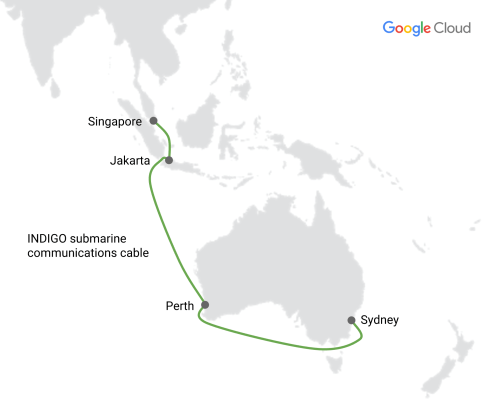

Google today announced that it will invest in a new subsea cable that will connect Singapore to Perth and Sydney in Australia (with a branch to Jakarta, Indonesia). The so-called Indigo cable will be almost 5,600 miles long and will be built by a consortium that also includes AARNet, Indosat Ooredoo, Singtel, SubPartners and Telsta.
 The cable will feature two fiber pairs with a total capacity of about 18 terabits per second — with the option to expand in the future.
The cable will feature two fiber pairs with a total capacity of about 18 terabits per second — with the option to expand in the future.
As Google notes, that’s enough to power 8 million simultaneous Google Hangout video calls (or are those Hangout Meet calls now?). Google, however, is obviously sharing the capacity here, so it won’t quite be able to handle all of those calls at any given time. It’s also worth noting that 18 terabits isn’t extremely fast by today’s standard. The subsea cable between Hong Kong and Los Angeles Google and Facebook invested in last year tops out at 120 terabits per second.
Google isn’t sharing how much it is investing in this project. We do know, though, that the APX-West cable between Singapore and Perth, which ultimately evolved into the new Indigo consortium announced today, was supposed to cost in excess of $75 million to build. The extension of the original APX project between Perth and Sydney was also supposed to include other landing sites in southern Australia. As far as we can see, those have been scrapped now.
Google has made a total of seven subsea cable investments so far. Five of these have been in Asia.
For Google’s customers, especially in Australia, having more bandwidth available between cities like Sydney, Perth and the rest of Asia (and the Middle East and Europe from there), will result in faster connections and (maybe more importantly) lower latency. The cable itself, though, should also improve connectivity between Perth and Sydney, which is currently a rather underserved market as far as direct subsea connections go. Overall, though, Australia’s connectivity to the rest of the world is scheduled to improve quite a bit over the course of the next few years, with various new submarine cable projects slated for completion in 2018.

